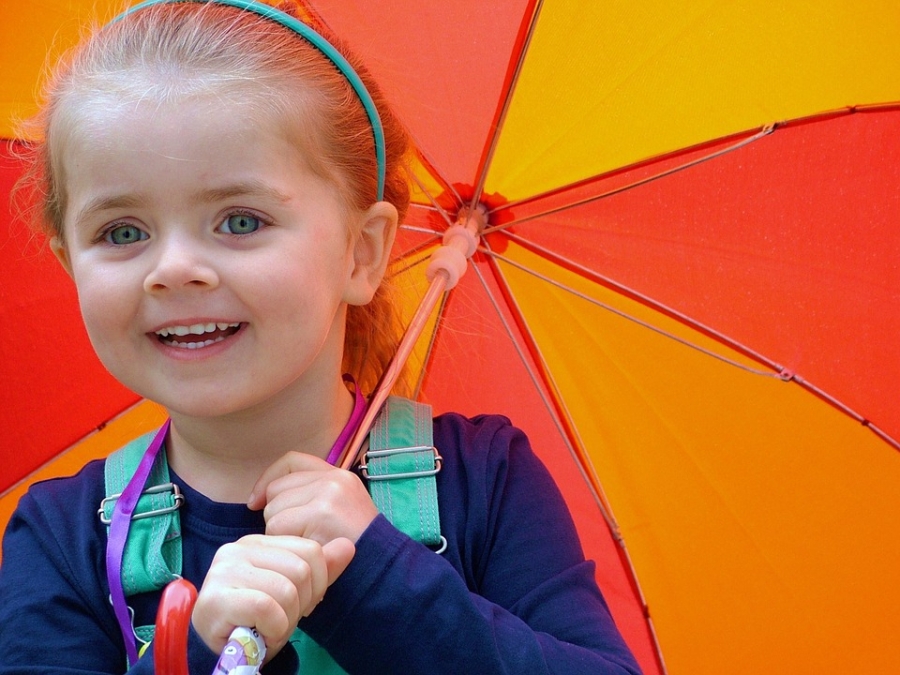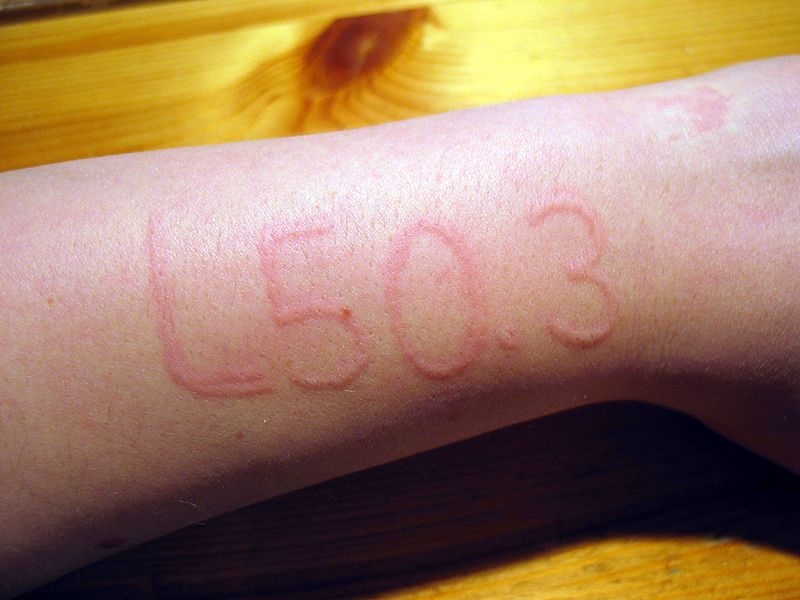“Water, water, everywhere, nor any drop to drink” describes the predicament that a sailor faces at the sea, in the poem “The Rime of the Ancient Mariner”, which was written by English poet Samuel Taylor Coleridge and first published in 1798. But is it only a sea of water, which is dangerous for a human being? What about getting caught in a rain? Or going for a regular shower in bathroom? Very few people can actually think about a situation, where a regular shower in one’s own house can be a dangerous experience. Unfortunately for a few rare individuals, living in this world, this challenge is an integral part of daily life.
Before an attempt is made to explain, the details of Aquagenic Urticaria, a preliminary knowledge about urticaria and allergy, (two interrelated concepts – as urticaria occurs due to allergy) would certainly be helpful.
The immune system of human beings, works to protect the human body from harmful attacks of external foreign agents like – bacteria and viruses. However, in certain situations this immune system becomes hyperreactive and attacks agents like – pollen grains, dust, fur & even certain foods, which are harmless for most people. The body in this situation creates IgE antibodies, which is responsible for release of chemicals known as histamines, which again causes reactions like – inflammation associated with redness and swelling, which would manifest differently in different organs of the body.
Urticaria in simple language is also known as hives. They are usually caused as a reaction to – medicine, food or any other substance, that irritates an individual’s body. The result manifest as – elevated, itchy, skin irregularities/ bumps or wheals, that are mostly red in colour, but sometimes also have normal skin colour. Pressure in the middle of such skin lesions, usually cause whitening of skin, even if they were red to start with. Sometimes mental stress, exercise and drinking alcohol may worsen the itching, which is seen in most of these cases.

Aquagenic Urticaria, is rather a very rare disease (with less than 100 cases reported till date), in which any contact of skin with water leads to development of severe urticaria or hives. These are usually red coloured small wheals with clearly defined edges. Although it can affect any parts of the body, but the upper parts like trunk, arms, shoulders and necks are more commonly involved and shows the previously mentioned changes; whenever the person concerned is taking a shower, bath or is swimming. The skin lesions appear within 30 minutes of contact with water and is associated with severe itching. It would be prudent to mention here that the source and temperature of water is no way related to the symptoms.
Usually only in the most severe cases (& in a very small minority of the patients in this extremely rare form of disease) actually suffer from this problem. However, those who do so can show different symptoms like – difficulty in swallowing, rash around the mouth, wheezing and difficulty in breathing. In these cases, urgent medical attention is warranted, for safety of the person concerned.
The cause of this very rare disease still remains obscure. Many different causes have been implicated. Some believe that it is not the water, but some allergen present in it, that is responsible for the urticaria. Others have put forward the theory that a toxin is produced by the water acting on the human skin; & this toxin is responsible for the clinical manifestations produced.
Most experts believe that there is no evidence to establish that the condition is carried forward from one generation to another, but in some families, where there are some other hereditary disease present along with Aquagenic Urticaria, successive generations have sometimes been seen to be involved.
In majority of cases it appears when a person is approaching adulthood, but no age is safe. Females are more commonly affected than males.
A typical history describing the above signs and symptoms, usually gives an idea about the above diagnosis. However, certain more definitive tests have also been designed. One of these is known as water challenge test, in which a water compress (of water at 35 degree centigrade) is applied to a skin area in upper part of the body, for 30 minutes. The typical symptoms are replicated by this manoeuvre. The reason that the upper part of body is chosen is because it is more commonly affected than lower parts like legs.
If for some reason, a water challenge test does not give a clear-cut result, a more challenging option like having a shower or direct bath has been attempted. However, these can be dangerous for a person who suffers from a severe condition of this “water allergy”.
The best way is to avoid problems, is to avoid contact with water as much as possible, which practically is not always possible. However, the contact duration can certainly be decreased, with proper planning. This includes infrequent showers (studies have shown that, for normal people, showering once every 2 or 3 days is good enough) of shorter intervals (keeping soaps and shampoos close, would save time searching for them, while taking bath) and taking precautions for safety in rainy seasons, are some of the common precautions advised. Sometimes the use of local creams of antihistaminic, have shown less severity of hive formation. Other creams which prevent direct contact of water with skin have also been advocated, with variable results.

Usually the skin eruptions fade within 30 to 60 minutes, once skin contact with water is removed and the effected part is dried of water. For the people who suffer from a more severe type of allergy, treatment is advised. However, due to the fact of only a small number of people being afflicted with this condition, treatment is more directed towards controlling the symptoms; as no real treatment which provides a cure for a lifetime, has yet been found out. Some of the commonly used treatments are –
1) Antihistamines – These are a group of medications that prevents the action of histamines, on the human body. As has been mentioned before, release of histamines in the body, is an integral part of allergy & hence is very closely related to the changes observed during Aquagenic Urticaria. So, by stopping these cascades of negative events, antihistamines provide relieve in the condition.
2) Some people have shown improvement with – Phototherapy, which is also known as Ultra Violet light treatment. It reduces mast cell activity (hence allergy) and thickens the epidermis of the skin and so decreases the penetration of water into the interior, and hence is helpful in the condition.
3) Use of Sodium bicarbonate bath in high dilutions has also shown benefits.
4) Propranolol - a medication, belonging to beta blocker class has also shown beneficial results in few select patients, who were given the drug, at a dose between 10 to 40 mg/day for 3 months.
5) Locally acting barrier creams like petrolatum, have been used in some cases to make the skin less penetrable to water. These can be specially used during work - like washing clothes or indulging in aquatic activities. Results have been promising in many cases.
6) Steroid drugs like stanozolol, which is an anabolic steroid, has been seen to reduce inflammation in some cases, with systemic symptoms. Stanozolol is used in dose of 10mg per day for this purpose.
6) EpiPen for very severe cases – This is an injection which contains adrenalin, which is also known as epinephrine. The function of this pharmacological drug(medicine) is to open airways in the lungs. It also narrows blood vessels and raises blood pressure. These are used only in severe allergic conditions, where they help in breathing & reduces swelling and hives.
There are quite a few other diseases, which present with a few similar symptoms like Aquagenic Urticaria. Some of these are – Aquagenic Pruritus (only itching is present, without any skin lesions), Dermatographias (The condition is known as Skin writing – lightly scratching an area, causes redness and hive to appear), Cholinergic Urticaria (also known as heat bumps, here urticaria is caused by sweating),Cold Urticaria (here hives are caused by exposure to cold), Exercise induced urticaria (here itching of the skin or hives are produced during or soon after exercise) and Solar Urticaria (also known as allergy to Sun, as hives are formed on skin exposed to Sunlight).

Water is one of the major 5 elements of the world & it is hard to believe a life without water. However, a cruel twist of fate, has caused a handful people of the world to suffer from this rare disease (less than 100 cases reported till date) of Aquagenic Urticaria. There are many other diseases which resemble the above-mentioned condition, hence under no situation should any person try to indulge in self-treatment. A person who has frequent complaints, as mentioned above, should consult a registered experienced Dermatologist (Skin specialist) - a doctor who is specially trained for treating diseases & conditions causing afflictions of skin.
Unfortunately, no definite cure is still available for the above-mentioned condition. However, with careful precautionary care and available symptomatic treatment, many complaints can be satisfactorily addressed.
(Disclaimer – This article although written by a health professional, is only for raising awareness about a rare condition & is no way a substitute of a direct consultation and examination, by a reputed Dermatologist. Reader’s discretion is advised.)